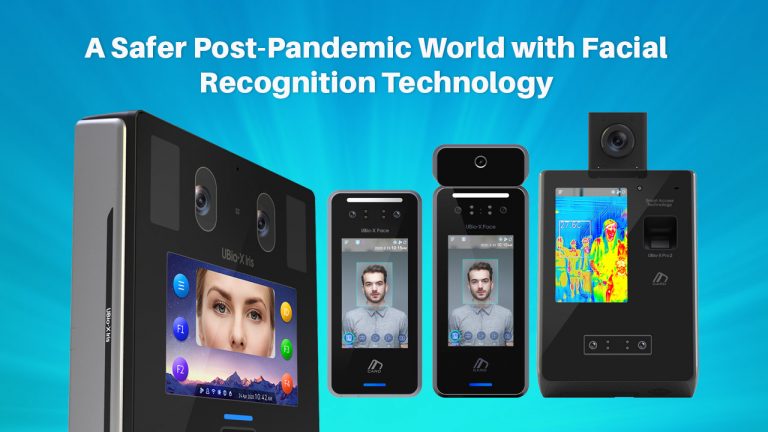A year it has been since the pandemic started and the world has somehow adapted to the changes that the new normal is leading how people should be living from now on (or at least until the right cure is found to keep us all safe from being infected by the virus).
There is no doubt that the COVID-19 pandemic changed how things are done nowadays. It changed profoundly how many people work, forcing millions to work and study temporarily from home where it’s safer. And while others have relocated to their homes for work and study, eventually companies needed to resume operation, and people needed to pick up where they left off before this whole pandemic happened.
Adapting to the new changes in the current normal paved the way for a more innovative world. In order to minimize contact, the use of more sophisticated technology is being put into use to help minimize the spread of the virus.
So what if there is a way to eliminate touchpoints and can make access totally hands-free and contactless which is more safe, hygienic, and convenient for all?
This is where Face Recognition Biometric Technology comes into play.
Biometric technology has been leading a contactless cause in integrating its use into the fabric of a new approach to post-COVID-19 access control. It is believed that even after this whole pandemic, such technology will remain useful and relevant in terms of providing a more efficient, productive, and healthy solution to security systems and other applications.
Facial Recognition For Reduced Touchpoints
As we look for new ways to interact in this COVID-19 pandemic world, touchless access has become an important innovation that has helped limit the spread of the virus in public places. Biometrics technology isn’t new technology at all. In fact, it has been long identified as a secure way for easy and secured access to various systems, accounts, buildings, and more.
Fingerprint authentication was a standard biometric identification application of the technology to be introduced and has been proven ever since as one secure option for identification. However, the nature of the pandemic which required people to keep a safe distance made such an application not relevant today. Since what we are battling for is a highly contagious disease, it can be easily transmitted through direct contact on surfaces which fingerprint scanners are a common touchpoint.
As the pandemic continues, biometrics technology continues to play a significant role in maintaining safety and security in many establishments. With technologies such as automatic thermal scanners that use facial recognition to monitor temperatures and identify people going in and out of facilities even with masks on, workplace-safety procedures are taken on a higher notch. As we rely on masks as the main protection against infection, the 3D facial recognition software does not require you to take off your mask just to be given access or identified. With facial recognition, touchpoints are completely eliminated. This makes facial recognition a reliable technology in today’s new normal.
Facial Recognition’s Application in Various Industries
The COVID-19 has only become an evolutionary catalyst for many industries to start using this technology. And not long enough, it has already changed the way we do things as a result of various industries, companies, and services adapting to the new ways of the new normal.
Securing safety in airports and transport stations
In airports where it is usually packed with travelers all around the world, where are out of all places to go to it is considered as one of the most prone to the spread of the virus, biometrics technology has provided quick, hygienic, and secure passage of travelers through multiple touchpoints in the airport.
Today, airlines and airports have streamlined biometrics technology to various touchpoints of the facility and enable passengers to check-in through face recognition. Rather than passing documents back and forth through various check-in points, face scans bring more secure, faster, and accurate processing of travelers. This eliminates long lines and crowding of people in one area which can be difficult to maintain social distancing.
When it comes to security, airlines and airports are able to implement tighter security through face recognition which enables airport authorities to identify strange personalities that can bring threat to other passengers even with masks on. Such technology can also detect passengers who are potential carriers of the virus via thermal scanners. Through biometric technology, passengers are also given access to various spots in the airport such as lounges for business class travelers.
Safe check-in and access in hotels
The same goes with the hotel industry, where guests can check-in through face recognition and other application of biometrics technology which allows guests to move freely without jeopardizing their health and of the other guests and hotel staff.
Diagnosing diseases
Aside from securing facilities in common public places, face recognition can also be used to diagnose diseases that may cause deformities in appearance. Algorithms today have become more and more sophisticated making face recognition technology an invaluable tool for such cases.
Thermal scanners rely on face recognition to detect temperatures which are critical. Those who are detected with high temperatures are notified by authorities and are quarantined to ensure they have not caught on the virus. Therefore, such technology effectively supports health and safety protocols in today’s post-pandemic world.
Smart Time and Attendance Tracking System
Various facilities can make use of face recognition to monitor who goes in and out of school, offices, and other buildings and facilities. Conventional approaches to time and attendance tracking have certain limitations and drawbacks. Biometric solutions have been proven to solve common drawbacks such as human error and manipulation which is manual tracking is prone to. Managing human resources is also made effective by having control over who gets access to various assets and facilities in the workplace.
Face recognition can function as a method for efficient access control that guarantees a more secure authorization in facilities such as meeting rooms, bank vaults, training centers, and other sensitive locations.
With the benefits that face recognition and other biometrics applications have in store for us, there is a sure projection that such technology will remain useful and relevant even after the pandemic. While it has long been proven that biometric technology, which is developed through artificial intelligence, have various applications that provide more convenience, ease, and security to various systems, this whole COVID-19 pandemic has only strengthened the need for such innovation to arise in today’s modern world.















